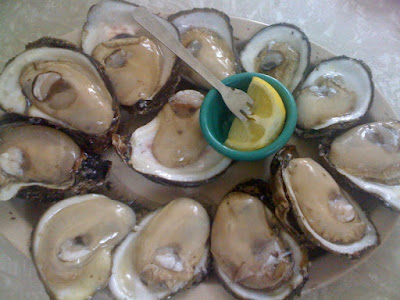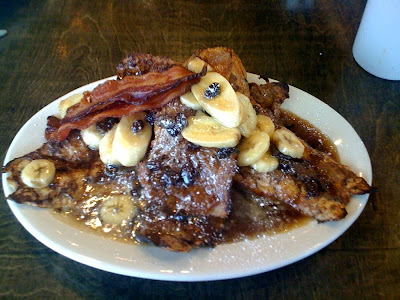
The idea of opening a restaurant was the furthest thing from Sebastian Mandina’s mind.
It was 1898, the threshold of a new, twentieth century, and Mandina had emigrated from Palermo, Sicily, to New Orleans in order to open a corner grocery in the growing Mid-City area. With his family settled in upstairs, he opened his store and started chipping off his piece of the American Dream.
Over time, the grocery evolved into a pool hall that sold sandwiches and the business was handed down to the two sons who continued to live above the store. By 1932, the Great Depression had arrived and Frank and Anthony Mandina decided their financial future would be more secure if it depended upon serving full meals to families instead of sandwiches to shooters and sharks. It was an idea that made sense for the times.
It still makes perfect sense today, as evidenced by the lines waiting for tables in the same building on the corner of Canal and Cortez Streets, where the same family (albeit several generations downstream) dishes out their now time-honored Creole-Italian brand of New Orleans home cooking.
Mandina’s has been self-described as “the quintessential New Orleans neighborhood restaurant,” and few would disagree. With its pedigree including a groceria and a poolroom, Mandina’s makes no pretense of being anything other than what it is: namely, a place that has continually evolved into what New Orleanians want it to be instead of a high-flying innovator hoping the city may follow its lead.
Beyond a modicum of kitchen modernizing and gussying up the bar and dining rooms after Hurricane Katrina poured three feet of water in the door, little has changed. The food is the same, the atmosphere is equally comfortable and the family went out of its way to make sure the faces throughout the operation were the same.
Walking into Mandina’s for the first or fiftieth time is an exercise in sudden comfort. The room and the bar area are nice enough, yet pleasantly informal. Large windows look through neon onto one of the quieter stretches of Canal Street, where red streetcars rumble by on a regular basis. Framed JazzFest posters adorn the walls, occasionally interspersed with old photographs. There are no booths, only tables and chairs. With its high ceilings, the room levels ambient noise into an even, yet lively buzz.
The room is a natural showcase of democracy having dinner. It is not uncommon to see a table of businessmen having a martini before lunch next a table of blue-jeaned inhabitants from the surrounding neighborhoods to three generations of a family celebrating Grandma’s birthday to a couple on a first date. The amount of people watching seems minimal, most people appearing absorbed in negotiating their way through very generous plates of food.
At some point in time, someone must have walked out of Mandina’s looking for more food – perhaps a sumo wrestler or a lumberjack coming off a three-day fast. For mere mortals, however, most portions of most items are large enough to share, and the rest are even bigger.
Consider starting with the onion rings. An “appetizer” portion is served on a platter that will easily feed four as a starter (and a “side” of French fries is even larger). The rings themselves show years of patron pleasing experience in the kitchen; they’re thin enough not to be daunting, but not so thin that they droop or break the moment they’re picked up. On a recent visit, our server was kind enough to ask Mrs. McH and me if we’d like a half order, something that doesn’t appear on the menu or we even knew existed. “No, go ahead and give us a regular order,” we said. Foolishly.
I used to believe I always ordered Mandina’s homemade turtle soup au sherry as a matter of habit, until I realized it had actually become a ritual. Watch the soup arrive at the table. Wait for the server to ask if I’d like a little more sherry and wait for the bottle to be instantly produced. Say “please.” Smile as the server adds somewhere between a dash or a dollop to give it some wallop. Dig in, knowing all is right in the world for the next few minutes, anyway.
Over the years, turtle soup has changed, much like New Orleans itself. Originally made from sea turtles weighing up to 1,000 pounds, ecological and conservation considerations have caused many turtle soup to use smaller, freshwater specimens, which many people believe has a gamier, brackish taste. This flavor is sometimes smoothed out through the addition or substitution of other meats, normally veal or pork, in the soup’s preparation. In some instances, the substitution is terrapin, a smaller, East Coast turtle with a taste some epicures proclaim superior.
Turtle soup is a polarizing dish. It seems that no one greets it with indifference; they love it or loathe it. The soup appears on numerous menus throughout the city, but New Orleans partisans will almost always include Mandina’s and one of the Brennan family outposts (usually Mr. B’s Bistro, Commander’s Palace or their eponymous French Quarter flagship) among their top two or three favorites. For city visitors unfamiliar with classic Crescent City preparations of turtle soup, Mandina’s is a very good place to get a first taste.
For a city of big, wide ranging appetites, Mandina’s menu has expanded to fit them all. Steaks, chops, chicken, seafood, soups, salads, and sides join a variety of Italian, daily and house specials along with a list of burgers, a muffaletta and po’boys that harken back to the restaurant’s earlier life as a pool hall.
While such a wide selection can be confusing, even intimidating, the real heart of Mandina’s menu is to be found in its House Specials section, a half dozen seafood entrees that are the foundation of the restaurant’s venerable popularity. Among them are speckled trout, fresh catfish from legendary Bayou Des Allemands and seasonal soft shell crabs, all prepared in the classically simple New Orleans Meuniere or Almandine styles. But if there is one special that truly blends the city’s Creole and Italian culinary cultures, it’s the Gilled Shrimp over Pasta Bordelaise.
“Bordelaise” New Orleans style should not be confused with the Bordeaux district in France or the rich white or brown sauces laden with shallots and herbs that bear the same name. In New Orleans, Bordelaise can be translated to “garlic, butter, garlic, leaf parsley, garlic, occasional thyme and, oh yes, garlic.” The dish is the essence of simplicity itself. Plump, fresh Louisiana shrimp grilled before being dumped atop a mountain of pasta drenched in this buttery, garlicky sauce. The portion size is enormous to the point Mrs. McH and I normally split an order and still leave some on the platter. In the dish’s sheer simplicity, every flavor comes through in an inspired blend. Yes, there’s enough garlic that you’ll want to take a roll of breath mints. Hell, you might think of taking two, but this is old style New Orleans Italian cooking at its best and most generous.
Mandina’s is anything but tony, hip or au courant. It’s a working class family restaurant that’s been catering to local tastes instead of creating them for three quarters of a century. And boy, does it work.
One final note: Unless you show up a few minutes before the doors open or prefer to dine in the middle of the afternoon, you should expect a wait for a table, particularly on weekends. Reservations aren’t accepted for parties of less than fifteen, and credit cards aren’t accepted at all. Should you find this way of doing business particularly old-fashioned, you may want to tell a member of the family. He or she will no doubt thank you for it.
Mandina’s Restaurant, 3800 Canal St (at South Cortez)
Open Seven Days a Week: Monday - Thursday 11:00 a.m.- 9:30 p.m.,
Friday & Saturday 11:00 a.m. - 10:00 p.m., Sunday Noon – 9:00 p.m.
Cash only, no credit cards or reservations for less than 15 accepted.
Telephone: (504) 482-9179, Website: www.mandinasrestaurant.com









